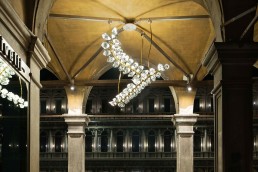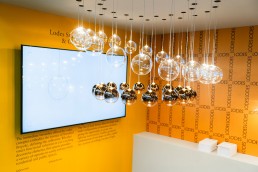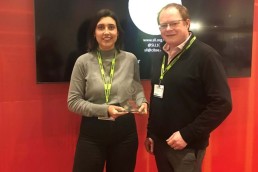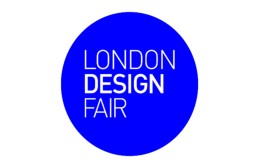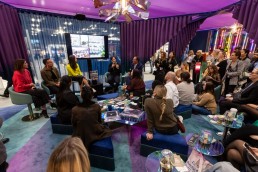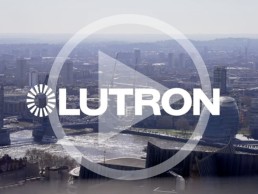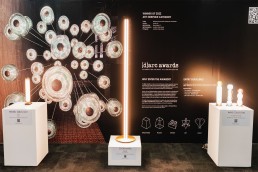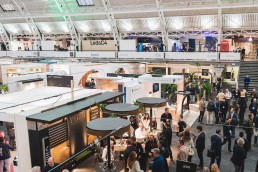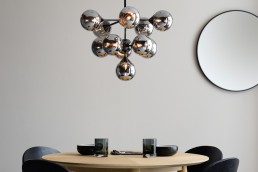Barovier&Toso feature in “Murano Illumina il Mondo
(Italy) - Barovier&Toso participates in the Murano Illuminina il Mondo, an art exhibition in Venice, Piazza San Marco where Murano glass industry meets contemporary art.
Murano Illuminates the World is the project promoted by The Venice Glass Week and the Municipality of Venice, which brings an exhibition project to Piazza San Marco and puts the spotlight on Murano glass and its future.
12 chandeliers came from the collaboration between 12 internationally renowned artists and nine of the most prestigious Murano furnaces. All artists were invited to reinterpret and transform a daily use object, such as the chandelier, into a work of art.
Each piece is used to transform Piazza San Marco to create a public art intervention for residents and tourists. Barovier&Toso created two bespoke chandeliers’, the first is Siphonophera by glass maker and artist Giorgio Vigna, and Il Redentore by artistic duo Monica Guggisberg and Phillip Baldwin.
Vigna chose to use Venetian crystal combining it with steel for his piece Siphonophera. Inspired by the wind and the water, natural elements that shape the form of the light sculpture, creating a sense of movement so when suspended it seems to sway to the rhythm of the wind.
Il Redentore, designed by Baldwin and Guggisberg, had the challenge of creating something contemporary and classic, both of the 19th century and of the 21st. The chandelier is composed of 44 arms in Venetian crystal, positioned on three levels: at the first level eight arms in antalia green, at the second 16 arms in bluastro tones, longer and more curved, and at the third level 20 red arms, even more extended and reaching upwards.
The internal silver specks, give the sculpture a sparkling appearance. In green, bluastro and red, the mounts that accommodate the arms are of the same colour, accentuating the chromatic strength of the entire chandelier.
This is the first edition of the exhibition and will be open to the public to see from 24 November 2023 to 29 February 2024.
LiGHT 23 Product Highlights from the Designers
(UK) - In November 2023, LiGHT, the UK’s only light specification show, made a dazzling return to London presenting an unparalleled showcase of innovation in lighting design. Drawing a diverse audience from the design community, the event unveiled an array of products, insightful talks programme and networking gatherings, with an augmentation to decorative lighting sector. The new darc space decorative areasaw high-end lighting brands for the interiors market exhibit in this space for the first time – names such as Empty State, Marset, Nexia, Artemide, Ebb & Flow, Lodes, and Quasar to name but a few. The Business Design Centre was teeming with talent, making it challenging for us at darc to narrow down the highlights of the show. Therefore, we enlisted the expertise of several designers, asking them to leverage their discerning taste and give insight to the darc readers on what they saw.
 Krishna Mistry, Lighting Designer and Founder of Mistry Lighting, shared her favourite product from the show: “The Stellar Nebula caught my eye; I love the organic shape and the way the glass interacts with the light. I can see it working very well within a double height central London apartment we are currently working on to create a statement feature using a cluster of different sized pendants suspended as different heights.”
Krishna Mistry, Lighting Designer and Founder of Mistry Lighting, shared her favourite product from the show: “The Stellar Nebula caught my eye; I love the organic shape and the way the glass interacts with the light. I can see it working very well within a double height central London apartment we are currently working on to create a statement feature using a cluster of different sized pendants suspended as different heights.”
Italian company, Artemide, makes its Stellar Nebular family of lamps through artisanal glass blowing techniques before being shaped by hand by master glass makers. This process ensures the “organic” quality that Mistry was captured by, with each lamp being a slightly unique crafted piece. After each lamp is shaped it is coated with a sustainable dichroic finish. This creates not only a protective coat but leaves beautiful rainbow refractions as light permeates the glass. The hanging pendant that was displayed during LiGHT 23 suspended on delicate wires, creating a beautiful scene like bubbles floating in the sky. As Mistry pointed out, it’s the perfect versatile product, with a range of sizes and lengths of its product allow it to be suitable for various ceiling suspensions – as well as being a brand with a sustainable edge.
Follow the link to view product www.artemide.com
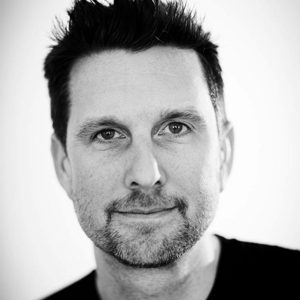 Darren Orrow, Director and Lighting Designer at into lighting, gave his highlight that collided two realms of light, that are architectural and decorative. Orrow said: “As architectural lighting designers it is often difficult to accurately represent decorative lighting in our light calculations as there may be no LDT or IES files. I was impressed to see that Franklite have their own photometer, spectrometer and a Rigo 801-1500 near-field Goniophotometer – a cutting edge device used for measurement of light emitted from an object at different angles. So, we can now use their photometric data in ELUMDAT (.ldt) and IESNA (.ies) formats in our lux calculations.”
Darren Orrow, Director and Lighting Designer at into lighting, gave his highlight that collided two realms of light, that are architectural and decorative. Orrow said: “As architectural lighting designers it is often difficult to accurately represent decorative lighting in our light calculations as there may be no LDT or IES files. I was impressed to see that Franklite have their own photometer, spectrometer and a Rigo 801-1500 near-field Goniophotometer – a cutting edge device used for measurement of light emitted from an object at different angles. So, we can now use their photometric data in ELUMDAT (.ldt) and IESNA (.ies) formats in our lux calculations.”
Franklite showcased in-house technology such as the Rigo Near-Field Goniophotometer, LED plates and award-winning tuneable lighting engines that demonstrated the smooth transitions from cool to warm at their LiGHT 23 exhibit stand. Franklite’s stand not only exemplified the brand's commitment to optimal performance but also featured a striking balance of aesthetics. The demonstration of smooth transitions from cool to warm light using their tuneable lighting display was a standout, mirroring the brand's dedication to both functionality and beauty. Exclusive decorative pieces previewed for the upcoming year included a finely detailed crystal chandelier with a halo structure and modern wall lamps in circular shapes; the latter diffused light in a manner reminiscent of an eclipse.
Follow the link to view product www.franklite.co.uk
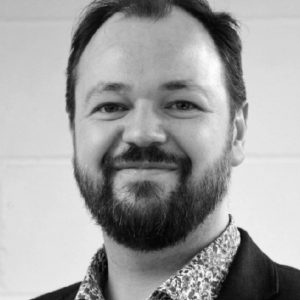 Marcus Steffan, director of MS Lighting, chose LYM’s Halley table lights, he said: “The floor standing and table reading lights were really interesting with their simple design but also working by plugging into a USB port. This opens up lots of opportunities for flexible use, even powering them from battery packs, which can be great for temporary setups.”
Marcus Steffan, director of MS Lighting, chose LYM’s Halley table lights, he said: “The floor standing and table reading lights were really interesting with their simple design but also working by plugging into a USB port. This opens up lots of opportunities for flexible use, even powering them from battery packs, which can be great for temporary setups.”
Hailing from Sacile in North Eastern Italy, LYM displayed its Hally range designed with practicality and performance with clean and minimal design in mind. The table lamp, that doubles up as a bedside table lamp, and half-floor lamp is equipped with a luminous projector-like diffusion, that emits 25-degree beam of light. The floor lamp has a special touch control feature that goes all along the lamp’s stem therefore avoiding the interference of keyboards. The Halley range was an apt choice for anyone searching for a more contemporary design with seamless blend of functionality and stylish lighting solution.
Follow the link to view product www.LYM.com
 Stephanie Dias, Interior Designer, and member of BIID gave her highlight spot to Lodes’ Random globe pendant display, she said: “I really like the impressive installation made by Lodes with designer Chia-Ying Lee. I believe they are a relatively new brand, but I was captivated by the synergy between the form of the globes and the various finishes used. I am confident that this chandelier would be a great addition to our projects.” The second Italian brand that made the spotlight, Lodes, which kept its exhibit stand simple yet eye-catching. On its stand, Lodes showcased a creative arrangement of pendants, suspending a cluster of globes at different heights to create spiralling shapes in the air. This transitioned seamlessly into its three shade finishes – clear, opal and smoked. The various finishes and full customisation were a brilliant spot from Dias as it can be utilised for residential projects or larger installations for spaces with double height ceilings.
Stephanie Dias, Interior Designer, and member of BIID gave her highlight spot to Lodes’ Random globe pendant display, she said: “I really like the impressive installation made by Lodes with designer Chia-Ying Lee. I believe they are a relatively new brand, but I was captivated by the synergy between the form of the globes and the various finishes used. I am confident that this chandelier would be a great addition to our projects.” The second Italian brand that made the spotlight, Lodes, which kept its exhibit stand simple yet eye-catching. On its stand, Lodes showcased a creative arrangement of pendants, suspending a cluster of globes at different heights to create spiralling shapes in the air. This transitioned seamlessly into its three shade finishes – clear, opal and smoked. The various finishes and full customisation were a brilliant spot from Dias as it can be utilised for residential projects or larger installations for spaces with double height ceilings.
Follow the link to view product www.lodes.com
The London-based expo LiGHT 24 will be returning next year for its third instalment after its successful second record breaking edition.. If you are a decorative supplier interested in exhibiting, contact jp.etchells@mondiale.co.uk.
www.lightexpolondon.com
Teresa Aguilar Carrasco named SLL Young Lighter 2023
(UK) - Teresa Aguilar Carrasco was named SLL Young Lighter 2023 with her project, CircaLight, a new circadian light assessment tool for Grasshopper environment.
This year’s final was hosted by SLL President-Elect, Dan Lister FSLL and took place at LiGHT 23 on 21 November. All four finalists delivered their presentations to a live audience of their peers for the first time since lockdown. Aguilar was announced as the 29th SLL Young Lighter winner at Light2Perform on 5 December 2023 at ExCel.
Aguilar is an architect, who graduated from the University of Seville in 2019, and is now a researcher at the Department of Architectural Construction of the Higher Technical School of Architecture of Seville. Aguilar is studying for a PhD in Architecture. Her doctoral research includes lighting and energy efficiency, each focussing on the impact of natural and electric lighting, on visual comfort and the health of individuals regarding circadian rhythms. She is a member of the research group for ‘Architecture, Heritage and Sustainability: Acoustics, Lighting, Optics and Energy’.
Aguilar’s work brings new approaches to the challenges of integrating different metrics into an accessible and easy to follow workflow. The judges felt that this work collected different processes and presented a new way to tackle the challenges of undertaking the daylight assessment of different metrics, delivering a consistent methodology to present and communicate the outcomes in a consistent manner. An analysis tool that has the potential to bring much wider support to the lighting industry and increased implementation of good daylight design.
Other 2023 finalists and presentations were Anna Freiesleben, Michael Grubb Studio - Light Beyond Earth: Illuminating life on exoplanets; Irene Mazzei, Edinburgh Napier University / Stoane Lighting (Knowledge Transfer Partnership) - Improving sustainability in the lighting industry; Teresa Aguilar Carrasco - CircaLight, a new circadian light assessment tool for Grasshopper environment; Tom Ruddle, EGG Lighting - Lighting Remanufacture.
The judges have said to be impressed by the quality of entries from the initial entry stage, maintaining an exceedingly high standard throughout the competition. All the finalists received a cash prize, along with a year's free membership of the Society.
Dan Lister, SLL President Elect, said: “All presentations were fantastic, delivered in a confident and accomplished manner – the finalists should all be commended for the exceptionally high standard of work, commitment they have put into their research and preparation for the competition. Setting an incredibly high bar for the future.”
Lister adds: “Because of such a high standard of submissions all the way through from the initial submission, video submission and the final presentations; the judges were looking for very small areas of differentiation between the finalists. All four finalists showed a deep knowledge of their subject, presenting with confidence and in an accomplished way. In the end the judges looked to identify the submission that represented something new in the field, demonstrating an innovative approach with original thinking and a practical approach that could benefit the lighting industry now.”
The competition is open to anyone with an interest in light and is designed to test not just the finalists’ ability to develop a lighting project, but also their presentation skills. It provides a unique platform for young lighters aged 30 and under, and is open for all to enter, allowing entrants to illustrate their knowledge, research, or ideas on a lighting subject, hone their presentation skills, and raise their profile within the industry.
Anyone can enter with any light or lighting related topic, including photography, product design, light and shadow, novel approach to lighting, natural and electric light, light art or a piece of original/different thinking based on formal or informal personal discovery.
Previous winners include Seda Kacel, Christopher Knowlton, Sabine De Schutter, Rachael Nicholls, Janna Aronson, Youmna Abdallah, Sofia Tolia, Matt Hanbury, Emma Beadle, Anna Wawrzyniak, Aluwaine Manyonga, Maria Englezou and Scott Kluger.
If you would like more information about the SLL Young Lighter competition 2024 email sll@cbse.org.
LDF will not be returning in 2024
(UK) - LDF have announced the show will not be returning in 2024. Despite a successful return in 2023, with over 13,000 visitors, and a three-year hiatus due to the pandemic, Diversified Communications have decided to postpone LDF for the immediate future.
Carsten Holm, Managing Director of Diversified Communications said; “I am so proud of the team, who have worked so incredibly hard in delivering a world-class event, promoting excellence in design both here in the UK and to an international audience. The event has always been a highlight of the design year, with incredible engagement from the community, including over 100,000 followers on social media, and 13,000 people coming to the show this year. However, we have found it increasingly difficult to serve the very broad spectrum of companies exhibiting at the fair effectively and reconcile the high expectations for an event of this quality, with the commercial support from the industry.”
Holm adds, “London Design Fair leaves a legacy of creativity, innovation, and community. The decision to postpone reflects the commitment to delivering an event that not only meets but exceeds the high standards set by the diverse and dynamic design community. We would like to take this opportunity to thank all our incredible partners, exhibitors and visitors for all their support over the years and are as disappointed as they are that the show will not take place again in 2024.”
www.LDF.com
BDNY gathers 15,000 visitors to its 2023 show
(USA) —BDNY, one of the leading trade fairs and conferences for the boutique hospitality and lifestyle industry, gathered nearly 15,000 at the Javits Center November 12-13 to experience new products, engaging conversations, and strategic networking events.
The show saw a 16% increase in overall attendance, a 15% increase in qualified buyers, and a 20% increase in exhibitors since 2022. More than 650 exhibiting companies participated, which included a greater international presence with more companies exhibiting from Spain and Italy, plus new pavilions from Portugal and Ukraine.
The successful talks programme featured 30 sessions covering such top-of-mind topics as biophilia in design, what’s new in F&B, state of the industry from owners and brands, how to nurture diversity in the industry, and the impact of AI on design. The fair also featured the annual Women Leaders in Hospitality breakfast, held in conjunction with NEWH (Network of Executive Women in Hospitality), where female executives representing all facets of the industry shared their journeys, today’s challenges and opportunities, and lessons learned.
BDNY featured four Designed Spaces, which partners leading design and brand teams with manufacturers to create one-of-a-kind lounges and stages on the show floor. These included brands such as Rockwell Group who used theatrical inspiration and subtly placed lighting from Lusive to highlight iridescent fabric panels in darker, jewel tones to emulate a luxury supper club in the ChromaClub. The spaces also featured pop-up talks and food and drink throughout the two days.
The BDNY Meet, a networking platform between exhibitors and attendees, also met an increase of 17% compared to 2022 with more than 3,700 attendees and exhibitors engaged in the event. This continued to serve as an important matchmaking tool both prior to and onsite at the trade fair.
The Best of BDNY 2023 Product Design Competition and BDNY Best Exhibit Competition winners were announced during the show. Chosen by two panels of industry experts, product winners and finalists were chosen across 14 categories for their aesthetic progress, functionality, and innovation; while best exhibit honorees in four categories earned nods for visual impact, effective and efficient use of materials, and use of space, colour, texture, lighting, and graphics. Best of BDNY Product Design Competition winners were split between décor and accessory winners, and the winners of the lighting category was Up Pro Cordless Lamp by Zafferano America.
Closing out the week of events, BDNY hosted the sold-out Gold Key Awards celebration on Monday, November 13 at Cipriani 42nd Street. 550 guests gathered to hear who took home top honours in 22 project categories, as well as the coveted Judges’ So Cool award, and fête the Design Firm and Hotelier of the Year.
Keisha Byrd, Brand Leader at BDNY, said: “The energy at BDNY this year was electric. Starting with an impressive turnout of more than 400 industry leaders at the Platinum Circle Gala, followed by a who’s who of the industry on the trade fair floor, and ending with a sold-out Gold Key Awards, BDNY proved to be the premier destination for inspiration. It continues to be the pivotal platform that honours and elevates the products, projects, and personalities shaping the hospitality industry.”
Kevin Gaffney, Group Vice President, Emerald Design Group says: "Following the success of another year and the positive response we received from exhibitors, attendees, and our design partners, we eagerly look forward to planning for 2024 and are committed to bringing the best of boutique design to New York.”
The next edition of BDNY will be held at Javits Center, November 10-11, 2024 www.bdny.com
New London office for Lutron’s European headquarters
https://youtu.be/EyIKd5aQFMM?si=Y7Z-ts3PfPjA-VqL
Lutron invested in a new London office to support their UK growth. They said: “This place is crafted for our people’s success, and to maximise their comfort and wellbeing. We wanted our office to be a shining example of what a modern workplace should be, and we’re proud of the space we created.”
This expansion gave Lutron the perfect opportunity to install their latest lighting control platform, so the staff can enjoy its benefit the same way their customers do today.
They now have dynamic lighting in the office, adjusting both colour intensity and temperature throughout the day. The lighting control works in combination with Lutron’s automated blinds, to optimise energy savings while providing a productive and comfortable environment for everyone.
3 weeks until [d]arc awards entries close
(UK) - Do you want to join the likes of recent LiGHT 23 exhibitors Phos, Curiousa, Flos, Jonathan Coles, and Radiant Lighting, and join the [d]arc awards hall of fame?
The [d]arc awards annual competition will close for submissions on 19 December, leaving less than 3 weeks to enter this unique opportunity.
Brought to you by, [d]arc media the awards offers a unique opportunity that brings lighting designers, architects, interior designers, and manufacturers together.
The [d]arc awards is an opportunity to showcase your latest lighting achievements, whether that’s through working on a project, or launching a new product. All eligible submissions are shortlisted by our expert panel of lighting designers, with the ultimate winners chosen by the wider design community.
All entries benefit from being published on the [d]arc awards website and a free company profile in our comprehensive online design directory - a resource that can be used by designers and clients for inspiration.
Winners of the 2023 [d]arc awards will be announced and celebrated in March 2024, at one of London’s most iconic nightclubs, Fabric. Check out some of our previous winning projects and products and learn more about entering, at www.darcawards.com
LiGHT 23 Sets Attendance Record
(UK) - LiGHT Expo London, the UK’s only trade show dedicated to lighting specification, saw a 43% increase in attendees from its launch event last year - closing its doors to a buzz of positivity.
Held over two days at the Business Design Centre, London with 4776 attendees passing through the doors to see the latest offerings from more than 150 high-end international lighting brands and engage with 22 talks and presentations from design experts working with light.
Attendees at the show included designers working in architecture, interiors, lighting, and product design, as well as engineers, end-users, and specifiers.
LiGHT 23 saw several new features introduced this year which included the new darc space decorative lighting area, which saw high-end lighting brands for the interiors market exhibit for the first time – names such as Empty State, Marset, Nexia, Artemide, Ebb & Flow, Lodes, and Quasar to name but a few. The brands presented their latest decorative and bespoke lighting collections to designers keen to find inspiration for their next projects.
One of the new addition to the show included the Associations Lounge, designed, and furnished by leading Danish brand Muuto, providing a comfortable space for designers to meet with colleagues. The International Association of Lighting Design (IALD) and the British Institute of Interior Design (BIID) invited existing members, along with potential new ones, to enjoy the space and make the most of the complementary refreshments.
The [d]arc thoughts talks programme, in collaboration with lighting control specialist Lutron, again attracted a steady stream of guests across the two days, keen to learn hot topics in lighting. The programme included a variety of presentations and panel discussions covering topics such as sustainability and circular design; designing for global brands, healthy office spaces, and restaurant / bar design. As well as a project Q&A from interior design studio SpaceInvader and a special look at the bespoke lighting piece from Quasar, featured in the Netflix hit Glass Onion, the programme was topped by a keynote presentation from Peruvian New York-based light artist Grimanesa Amoros.
LiGHT 23 also provided a platform for the latest instalment of the ILP’s ‘How to be Brilliant’ talks, with Light Bureau’s Paul Traynor taking to the stage, while the very first Lighting Police walking workshop also took place on the final evening.
LiGHT WORK made a return, with show visitors making good use of the dedicated workspace area. Illuminated by table lamps from British lighting brand Tala, creating a relaxing space allowing show attendees to complete office tasks. The area also offered dedicated wi-fi, free coffee, and charging points.
Paul James, [d]arc media Managing Director said: “We are thrilled with the overwhelming response to the show. The massive increase in exhibitor and visitor numbers confirms that London, and the UK, has been craving a trade show that serves the lighting specification market. We have seen a 40% increase in attendees this year and it’s only year two.”
James adds: “With an almost 100% rebook rate from exhibitors during the show itself, this is just the beginning for LiGHT Expo in London, and we’re excited to see what the 2024 edition will bring, as we expand further into the Business Design Centre. We have had nothing but positive feedback from exhibiting brands and visitors alike.”
Dates for next year’s show are now confirmed as 20 & 21 November 2024 and will be free to visitors.
Home & Lifestyle Show registration is open
(UK) – The inaugural Home & Lifestyle Show has now opened its registration.
Co-located at the January Furniture show on 21 – 24 January 2024 at the NEC Birmingham, the H&L Show offers visitors the opportunity to explore lighting, furniture, homewares, upholstery, and lifestyle.
H&L Show is marketplace for interior designers and retailers to seek the new season product offering as well as see the latest launches and designs hitting the market. The show will include an array of lighting brands including: Dannells, Gallery Direct, Mindy Brownes Interiors/Genesis Fine Arts Limited, Paulmann Licht, Premier Housewares, and more.
The show also offers facilitated networking opportunities with the industry via new additions to the show including a Champagne Bar, a Show Party featuring the Furniture awards, and a Women in Furniture ‘Speed Networking’ event.
Click here to register and find out more at www.thefurnitureshows.com
Maison&Objet presents Tech Eden January 2024 Theme
(France) – Maison&Objet has announced the theme of its January 2024 show will be Tech Eden.
In conjunction with its 30th anniversary, Maison&Objet will be exploring the theme of Tech Eden following last year’s theme ‘Enjoy!”, Tech Eden conveys an optimism through shape and colour, focusing on futuristic biophilia and a new world of well-being.
Tech Eden was created with strategy agency Peclers Paris, who have said to see it as an opportunity to “highlight the profound evolution in the relationship between science and nature, and project it into a sustainable and desirable future.”
Peclers offers a narrative, on a futuristic utopia with new realities, will feed into the show’s activities, encompassing all sectors of interior decoration and design, arts and crafts, retail, decor, and hospitality. Through immersive experiences, Tech eden invites professionals to rethink spatial design and layout, augmented by technological innovation, and employing innovative aesthetic and environmental approaches.
Tech Eden will take place in several different locations, giving expression to its futuristic aesthetics and technological advances, as well as its gentle approach and appetite for a return to biophilia due to venues becoming hybridised.
The ‘What’s New? In Retail?’ space has become a think-tank for the now omni-channel distribution sector, offering a selection of new products, a programme of workshops and conferences, a café, and a wealth of merchandising ideas. François Delclaux will present a space for sourcing, inspiration, and exchange, in collaboration with the global design agency BETC.
The scenography of the venue has been given the softest of designs, where “tech” makes a discreet appearance, expressed by enveloping materials, natural forms, and gentle colours. This will serve as a showcase for three major trends: sustainable minimalism, responsible brutalism (re-use and recycling of materials), and organic fluidity.
In a post-lockdown context, the home is being transformed by remote working. Homes are getting comfy yet flexible, with living rooms becoming offices and bathrooms becoming living rooms for well-being; Elisabeth Leriche’s "What's New? In Decor" trend space will focus on this fresh approach to interior decoration. While in hospitality, “the Hospitality Lab” Has three chill pods – awakening, active, regenerative – mixing well-being in cafes, luxury spas in hotels, and high-tech sports hall in waiting areas.
Maison&Objet has also announced that Mathieu Lehanneur has been named ‘Designer of the Year 2024’. Each year, this award honours a key figure in the international design industry. During the January show, the designer will craft a dedicated space that reflects his research and career path, titled ‘Outonomy’.
Melanie Leroy, Managing Director of Maison&Objet, said. “This anniversary edition will mark a significant development in Maison&Objet’s ability to support its customers while also celebrating 30 years of inspiration, creativity and closeness to its community.”
Maison&Objet will be taking place in Paris between the 18-22 of January, go to www.maison&objet.com to plan your visit now.
darc @ LDF 2023 'Does varied experience and diverse backgrounds positively impact design?'
"Does varied experience and diverse backgrounds positively impact design?" darc's editor Sarah is joined by a panel of industry experts, including Anuj Gala, Dara Huang and Tola Ojuolape in exploring why gathering design influences, skills, and experience from different industries, countries, and cultures can make you a better designer.
Entry is Open for Design Guild Mark Awards 2024
(UK) - The Design Guild Mark has opened their entries for the 2024 award show, inviting designers and companies to submit entries.
Established in 2008, by the Furniture Marker’s company, the non-profit programme was created to raise the profile of British Industrial design and to recognise it’s excellence. The award is open to designers working in Britain or abroad and must submit to one of three categories: furniture, lighting, and interior design.
Submissions can be for an individual product or a collection of products that are currently in production, that were designed for, and are manufactured by, an industrial design process. The designs can be intended for domestic, office, hospitality, educational or corporate use, and for both interior and exterior environments, with no restriction on when the design was launched.
The competition process works by applicants presenting their submission in person in front of a panel of independent expert judges. Instead of a ranking system, the award is given to all designs that demonstrate to the judges that they represent the highest standards of originality and innovation in industrial design. Entries are measured by a selection of criteria such as innovation, function, form, brand, and environmental responsibility.
Winners of the Mark will be celebrated at the award ceremony on the 23 May. This year’s judges for the lighting category include Simon Alderson from twentytwentyone; Gitta Gschwendtner of Gschwendtner; Risa Sano from Mensten; Simon Terry from Anglepoise, John Tree from Jasper Morrison; and Sebastian Wrong from Established & Sons.
Past winners in the Lighting category include David Irwin from Luum for his Oslin Collection, Tala for the ‘The Muse in solid brass and Terrence Woodgate for Case Furniture for his Solid Rechargeable Light.
Alderson of twentytwentyone, says: “This year’s DGM Lighting award offered a diversity in approach, materials and applications. The designers presented their work extremely well, and it is this distinct component of the Design Guild Mark that makes the review of British-based creativity so special. The award acknowledges many criteria, though functionality, sustainability, price, and personality are celebrated as key components in this year’s winning designs.”
Previous winner Irwin adds: “I’m delighted to receive a Design Guild Mark, it’s a great honour to be granted this prestigious award and a privilege to be part of a community that values and celebrates excellence in design. It’s a testament to the hard work and dedication of everyone involved in bringing these designs to life, from the initial concept to the final product. Thank you to the judges for acknowledging our efforts, and to our clients for entrusting us with this project.”
Designers and companies have until 24 of November 2023 to submit an entry to meet the early bird deadline and until the 19 January 2024 for the final deadline.


